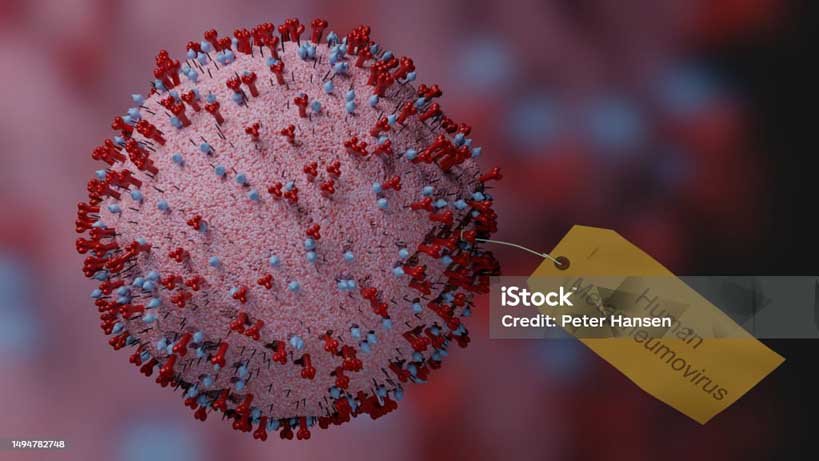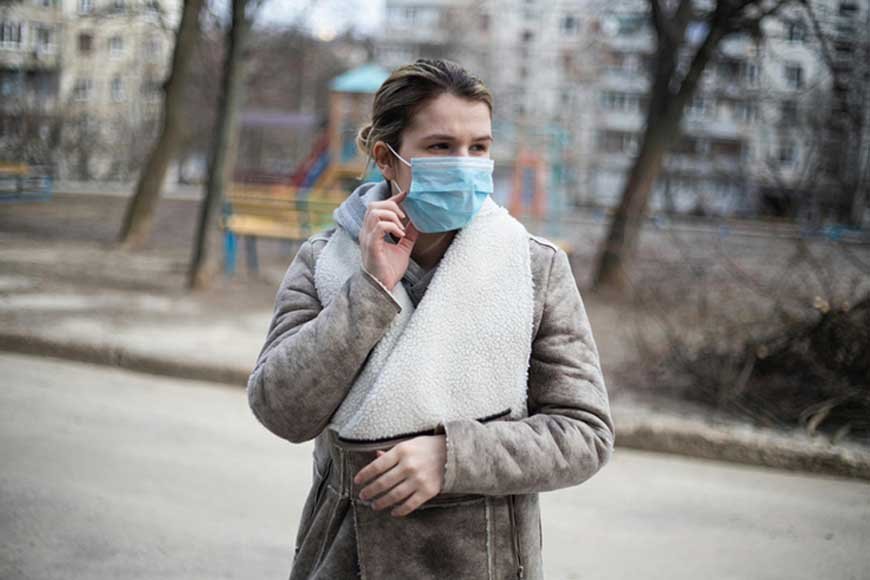Introduction: Understanding the HMPV Virus
In recent weeks, a surge in cases of Human Metapneumovirus (HMPV) has been reported across China, raising public health concerns and sparking widespread discussion. While HMPV is not a new virus, its sudden spike in cases has caught the attention of healthcare professionals, researchers, and the general public alike. This article dives deep into what HMPV is, why it’s surging in China, and how you can protect yourself and your loved ones.
What is HMPV? An Overview
Human Metapneumovirus (HMPV) is a respiratory virus first identified in 2001. It belongs to the Pneumoviridae family and shares similarities with other common respiratory viruses like RSV (Respiratory Syncytial Virus) and influenza. HMPV primarily causes upper and lower respiratory tract infections, particularly in young children, older adults, and immunocompromised individuals.
Key Characteristics of HMPV:
- Transmission: Spread through respiratory droplets, close contact, or contaminated surfaces. It is highly contagious, especially in crowded or enclosed spaces such as schools and nursing homes.
- Symptoms: Fever, cough, nasal congestion, sore throat, fatigue, and in severe cases, bronchitis or pneumonia. Symptoms typically appear 4-6 days after exposure.
- Seasonality: Most cases occur in late winter and spring, aligning with peaks in other respiratory viruses.
- At-Risk Groups: Infants under two years, elderly individuals, and those with chronic medical conditions are most susceptible to severe outcomes.
How HMPV Affects the Body:
HMPV primarily targets the respiratory tract, causing inflammation in the nasal passages, throat, and lungs. In severe cases, it can lead to complications like:
- Bronchiolitis: Inflammation of the small airways in the lungs.
- Pneumonia: Infection of the lung tissue, potentially requiring hospitalization.
- Exacerbation of Chronic Conditions: Such as asthma, COPD, or heart failure.

The Current Situation in China
According to recent reports by China CDC Weekly, a significant increase in HMPV cases has been observed in multiple regions of China during the winter of 2024-2025. The surge coincides with the seasonal peak of respiratory illnesses, including influenza and RSV, making it challenging for healthcare providers to differentiate between these infections.
Statistical Insights:
| Region | Reported Cases (December 2024) | Increase Compared to Last Year |
| Beijing | 15,000 | +35% |
| Shanghai | 10,500 | +28% |
| Guangdong | 8,200 | +40% |
| Sichuan | 7,500 | +32% |
| Zhejiang | 6,800 | +25% |
Factors Contributing to the Surge:
- Post-Pandemic Immunity Gap: Reduced exposure to common viruses during COVID-19 lockdowns has left populations more susceptible, particularly children born during or shortly after the pandemic.
- Seasonal Overlap: The concurrent circulation of multiple respiratory viruses creates a perfect storm for increased infections.
- Improved Diagnostics: Enhanced testing capabilities and public health awareness have led to higher detection rates.
- Urbanization and Mobility: High population density and increased travel during holidays have facilitated faster virus spread.
Global Context:
While China is experiencing a surge, HMPV is not limited to one country. Reports from the United States and Europe indicate that HMPV cases have been increasing globally, underscoring the need for international awareness and cooperation in addressing respiratory virus outbreaks.
Agitation: Why This Matters
The resurgence of HMPV is a reminder of the ongoing challenges posed by respiratory viruses. With symptoms that mimic other illnesses, delayed diagnosis and treatment can lead to severe outcomes, particularly in vulnerable populations. Additionally, the strain on healthcare systems during peak flu seasons can exacerbate the situation, leading to overcrowded hospitals and resource shortages.
Real-Life Impact:
- A report by Xinhua News highlighted a pediatric hospital in Shanghai where admissions surged by 50% due to respiratory illnesses, including HMPV. Doctors noted an increase in severe cases requiring intensive care.
- Families are grappling with uncertainty as symptoms overlap with those of more familiar viruses like COVID-19 and influenza, delaying proper treatment.
- Healthcare workers are facing burnout due to the compounded burden of multiple respiratory viruses circulating simultaneously.
Solution: How to Stay Protected
To mitigate the impact of HMPV, public health officials recommend a combination of preventive measures, early diagnosis, and supportive care.
Prevention Tips:
- Hygiene Practices:
- Wash hands frequently with soap and water for at least 20 seconds.
- Use alcohol-based hand sanitizers when soap is unavailable.
- Respiratory Etiquette:
- Cover your mouth and nose with a tissue or elbow when coughing or sneezing.
- Dispose of tissues properly and sanitize hands immediately afterward.
- Disinfection:
- Regularly clean and disinfect commonly touched surfaces, such as doorknobs, phones, and keyboards.
- Avoid Crowded Spaces:
- Limit time spent in crowded areas, especially during peak respiratory illness seasons.
- Healthy Lifestyle:
- Maintain a balanced diet, stay hydrated, and get enough sleep to boost your immune system.
Medical Management:
- Antiviral Medications: While no specific antiviral exists for HMPV, supportive care, such as hydration and fever management, is effective.
- Hospitalization: Severe cases, especially those involving respiratory distress, may require oxygen therapy or mechanical ventilation.
- Vaccination Efforts: Researchers are actively working on developing vaccines and treatments for HMPV.
When to Seek Medical Attention:
- Persistent high fever lasting more than three days.
- Difficulty breathing or wheezing.
- Symptoms that worsen after initial improvement.
- Dehydration signs, such as reduced urination or dry mouth.

Comparative Table: HMPV vs. Common Cold vs. COVID-19
| Feature | HMPV | Common Cold | COVID-19 |
| Cause | Human Metapneumovirus | Rhinoviruses, Coronaviruses | SARS-CoV-2 |
| Symptoms | Fever, cough, nasal congestion, | Sneezing, runny nose, mild cough | Fever, cough, fatigue, loss of |
| sore throat, fatigue | sore throat | taste/smell, difficulty breathing | |
| Severity | Mild to severe | Mild | Mild to severe, can cause death |
| Transmission | Respiratory droplets, contact | Respiratory droplets, contact | Respiratory droplets, aerosols |
| At-Risk Groups | Young children, elderly, | Children | Elderly, immunocompromised, |
| immunocompromised | those with comorbidities | ||
| Treatment | Supportive care, oxygen therapy | Symptomatic relief | Antivirals, supportive care |
| Prevention | Hygiene, avoid contact with sick | Hygiene, avoid contact with sick | Hygiene, masks, vaccination |
Key Takeaways
- HMPV is a common yet under-recognized respiratory virus surging in China.
- Vulnerable populations, including children and the elderly, are most at risk.
- Prevention through hygiene, early diagnosis, and supportive care are essential.
- Public health efforts must focus on awareness, healthcare system preparedness, and research into vaccines and treatments.
FAQs About HMPV
- What is HMPV, and how does it differ from RSV? HMPV and RSV are both respiratory viruses but differ in genetic structure. HMPV tends to affect older children and adults more than RSV, which is most severe in infants.
- Why is HMPV surging now? Factors include post-pandemic immunity gaps, seasonal trends, and increased diagnostic capabilities.
- Is there a vaccine for HMPV? Currently, no vaccine exists, but research is ongoing. Scientists are optimistic about potential breakthroughs in the coming years.
- How is HMPV diagnosed? Through laboratory tests like PCR or antigen detection, which identify the virus’s genetic material or proteins.
- Can HMPV cause long-term complications? Severe cases can lead to chronic respiratory issues, particularly in individuals with pre-existing conditions or weakened immune systems.
Conclusion
The recent surge in HMPV cases in China underscores the importance of vigilance in monitoring respiratory viruses. By understanding the nature of HMPV and adopting preventive measures, we can minimize its impact on public health. Stay informed, practice good hygiene, and consult healthcare providers if symptoms arise. Together, we can navigate this challenge and protect our communities.
Suggested Video:
Understanding HMPV: Symptoms, Prevention, and Treatment. (Video).
External Sources and References
To provide a deeper understanding of HMPV and related health concerns, we have relied on information from trusted sources:
- Centers for Disease Control and Prevention (CDC)
- Website: https://www.cdc.gov
- Offers valuable insights into HMPV, including prevention and transmission details.
- World Health Organization (WHO)
- Website: https://www.who.int
- A global perspective on respiratory viruses and health measures.
- China CDC Weekly
- Website: https://weekly.chinacdc.cn/
- Reports on the local surge in HMPV cases and associated public health responses.
- National Institutes of Health (NIH)
- Website: https://www.nih.gov
- Research updates on HMPV and other respiratory viruses.
- PubMed
- Website: https://pubmed.ncbi.nlm.nih.gov
- A repository of scientific papers and case studies on HMPV.
- Xinhua News Agency
- Website: http://www.xinhuanet.com
- Reports on the healthcare impact of respiratory illnesses in China.
- The Lancet
- Website: https://www.thelancet.com
- Expert opinions and peer-reviewed articles on respiratory infections.
- Johns Hopkins Medicine
- Website: https://www.hopkinsmedicine.org
- Guidelines for managing and preventing respiratory illnesses.
- Nature
- Website: https://www.nature.com
- Research and developments in virology, including HMPV studies.
- MedlinePlus
- Website: https://medlineplus.gov
- Simplified explanations of HMPV symptoms, treatment, and prevention.

